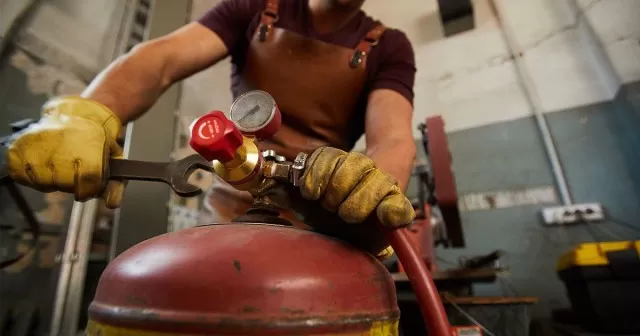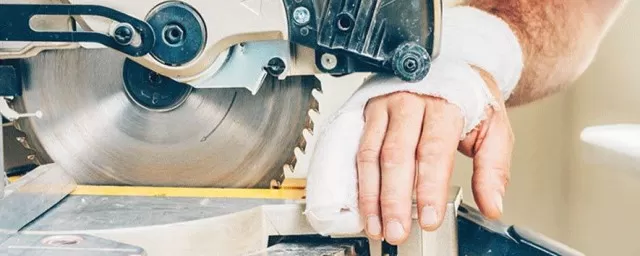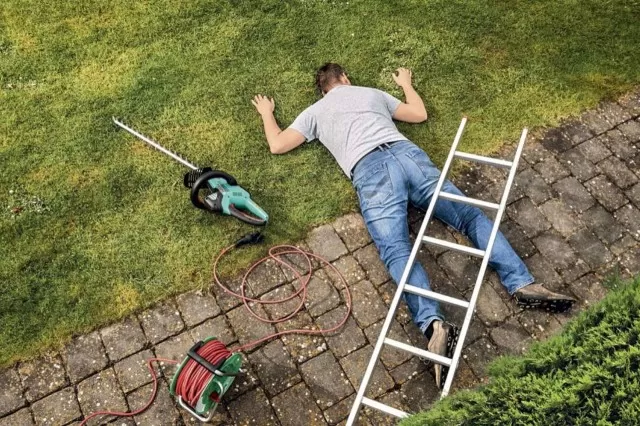Essential Safety Measures for Accident Prevention. While your home may be your sanctuary, it’s important to be aware that home improvement and maintenance projects can come with certain risks. Whether you’re tackling a DIY project or hiring professionals, it’s crucial to prioritize safety and protect both yourself and your home.
Common issues that can arise during routine home projects include electrical hazards, falls from ladders or scaffolding, exposure to harmful substances, and potential damage to your property. By taking necessary precautions such as wearing protective gear, following safety guidelines, using proper tools and equipment, and hiring licensed and insured contractors, you can minimize the risks and ensure a safe environment for yourself and your home. Remember, prioritizing safety is key when it comes to maintaining and improving your living space.
Safety First: Protecting Underground Utility Lines

Whether you’re planning to plant a tree, install a fence, or embark on any digging project, it is vital to prioritize safety by knowing the location of underground utility lines.
Failing to do so can result in unintended damage to buried pipes, television hookups, or even power lines. Surprisingly, accidents of this nature occur more frequently than one might expect, with the Common Ground Alliance estimating that U.
S. homeowners accidentally hit in-ground utility lines as often as every three minutes.
To safeguard yourself and prevent potential hazards, it is crucial to take proactive measures. Before breaking ground, make a responsible choice and call 811.
This free government service works in coordination with local utilities to send experts to your property and mark the precise locations of any underground lines. By following this simple step, you gain valuable information on areas to avoid during your digging project, ensuring the safety of yourself, your property, and the utility infrastructure.
Prioritize safety and avoid unnecessary risks by utilizing the resources available to you. Take advantage of the free government service provided by calling 811 and allow professionals to identify and mark the locations of underground utility lines.
By doing so, you can proceed with confidence, knowing that you have taken the necessary precautions to prevent accidents and protect vital underground infrastructure.
Prevent Fires: Safeguard Your Home by Cleaning Clogged Dryer Vents
The threat of house fires caused by excess dryer lint is a reminder that should never be ignored.
While you may already diligently clean the lint filter and vacuum inside the dryer, it’s crucial not to overlook the dryer vent—the pathway that releases hot air to the outdoors. Neglecting to inspect and clean the vent increases the risk unnecessarily. To ensure safety, it’s essential to incorporate vent cleaning into your regular outdoor maintenance routine. Begin by disconnecting the exhaust duct from the dryer. Then, head outdoors to locate the vent termination. If necessary, remove the vent cap and take a few minutes to thoroughly clear the vent using a vacuum and brush. This process helps remove accumulated lint and debris, improving the vent’s efficiency and reducing the risk of fire. By making vent cleaning a regular part of your maintenance routine, you can proactively prevent hazards and protect your home and loved ones. Don’t underestimate the importance of this simple task in safeguarding against the potential dangers associated with clogged dryer vents. Prioritize safety and take the necessary steps to keep your dryer vents clean and clear.
Prioritize Safety: Protect Yourself from Power Tool Injuries

When it comes to using power tools, wearing the appropriate protective gear is just as crucial as mastering the correct techniques.
To ensure your safety, always equip yourself with basic protective equipment before operating any power tool. Start by wearing goggles to shield your eyes from flying debris or particles.
Protect your hands with sturdy work gloves to prevent cuts and abrasions. Safeguard your hearing by wearing earplugs or earmuffs to reduce the risk of hearing damage caused by prolonged exposure to loud noises.
Closed-toe shoes are essential to minimize the impact of falling objects and provide adequate foot protection. In situations where power tools generate a significant amount of dust and debris, consider wearing a face mask or respirator to protect your respiratory system.
When it comes to clothing, avoid wearing loose-fitting attire or jewelry that could get caught in the machine, potentially causing accidents or injuries. By taking these precautions, you significantly reduce the risk of both minor injuries and more severe consequences such as blindness, hearing loss, deep cuts, or even severed limbs.
Remember, prioritizing safety and wearing the proper protective gear is essential to prevent accidents and ensure your well-being when working with power tools.
Breathe Easy: Ensure Adequate Ventilation for Indoor Painting
When embarking on an indoor painting project, it’s crucial to prioritize proper ventilation to minimize exposure to volatile organic compounds (VOCs) found in paints and stains.
These chemicals can have negative side effects such as dizziness, eye and lung irritation, fatigue, headaches, and more. To safeguard your health and well-being, follow these guidelines to maintain adequate ventilation during the painting process. First and foremost, open all windows in the room to allow fresh air to circulate. This helps in dissipating the paint fumes and directing them outdoors. Position an exhaust fan near a window to facilitate the flow of air and assist in drawing the fumes outside. Alternatively, you can use a window-mounted box fan to achieve a similar effect, expelling the fumes and promoting ventilation. After completing the painting project, leave the windows open for 2-3 days to allow any remaining fumes to dissipate completely. During this period, it’s advisable to limit your time spent in the room to minimize exposure to lingering VOCs. Additionally, consider wearing a respirator while painting or staining for added protection against inhaling harmful chemicals. By maintaining proper ventilation and taking these precautions, you can reduce the risk of experiencing adverse effects associated with VOC exposure. Prioritize your health and well-being during indoor painting projects, ensuring a safe and comfortable environment for yourself and others.
Safe Fuel Storage: Preventing Hazards in Your Garage

If you rely on gasoline to power your outdoor tools, it’s essential to store fuel responsibly to avoid potential combustion hazards.
While it’s necessary to keep at least one canister of gasoline at home for refueling, taking certain precautions is crucial to ensure safety. Follow these guidelines to prevent accidents and comply with local fire codes:Check local fire codes: Familiarize yourself with the regulations and restrictions imposed by your local authorities regarding the storage of flammable fuels.
These codes may specify limits on the quantity of fuel you can store in one location. Use tightly-sealed containers: Split your fuel supply into tightly-sealed containers, with each container holding a maximum of 5 gallons.
This helps prevent leaks and limits the potential for flammable vapors. Store away from direct sunlight: Keep the fuel containers in a cool, well-ventilated area away from direct sunlight.
Exposure to heat and sunlight can increase the risk of vapor accumulation and potential ignition. Keep away from heat sources: Store the fuel containers away from any sources of heat, such as the garage heater or appliances that generate heat.
Maintain a safe distance to prevent accidental ignition. Maintain distance from ignition sources: Ensure the fuel containers are stored at least 50 feet away from ignition sources, such as open flames, sparks, electrical equipment, or pilot lights.
This distance helps minimize the risk of accidental fires. By adhering to these precautions, you can significantly reduce the likelihood of combustion and ensure the safe storage of flammable fuels in your garage.
Prioritize safety, follow local regulations, and take necessary measures to prevent hazards associated with improper fuel storage.
*The information is for reference only.